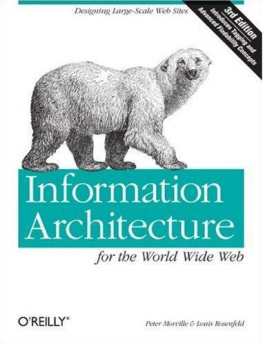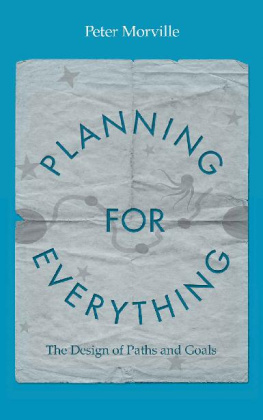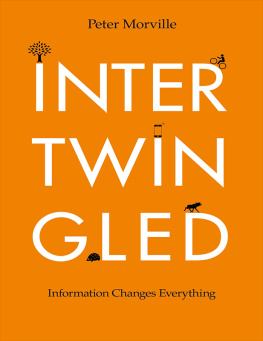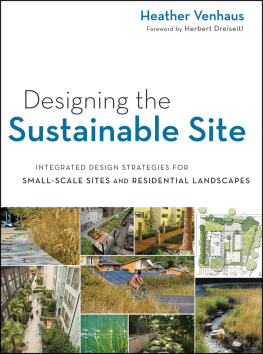Peter Morville - Information Architecture for the World Wide Web: Designing Large-Scale Web Sites
Here you can read online Peter Morville - Information Architecture for the World Wide Web: Designing Large-Scale Web Sites full text of the book (entire story) in english for free. Download pdf and epub, get meaning, cover and reviews about this ebook. year: 2006, publisher: OReilly Media, genre: Computer. Description of the work, (preface) as well as reviews are available. Best literature library LitArk.com created for fans of good reading and offers a wide selection of genres:
Romance novel
Science fiction
Adventure
Detective
Science
History
Home and family
Prose
Art
Politics
Computer
Non-fiction
Religion
Business
Children
Humor
Choose a favorite category and find really read worthwhile books. Enjoy immersion in the world of imagination, feel the emotions of the characters or learn something new for yourself, make an fascinating discovery.
- Book:Information Architecture for the World Wide Web: Designing Large-Scale Web Sites
- Author:
- Publisher:OReilly Media
- Genre:
- Year:2006
- Rating:4 / 5
- Favourites:Add to favourites
- Your mark:
- 80
- 1
- 2
- 3
- 4
- 5
Information Architecture for the World Wide Web: Designing Large-Scale Web Sites: summary, description and annotation
We offer to read an annotation, description, summary or preface (depends on what the author of the book "Information Architecture for the World Wide Web: Designing Large-Scale Web Sites" wrote himself). If you haven't found the necessary information about the book — write in the comments, we will try to find it.
Information Architecture for the World Wide Web: Designing Large-Scale Web Sites — read online for free the complete book (whole text) full work
Below is the text of the book, divided by pages. System saving the place of the last page read, allows you to conveniently read the book "Information Architecture for the World Wide Web: Designing Large-Scale Web Sites" online for free, without having to search again every time where you left off. Put a bookmark, and you can go to the page where you finished reading at any time.
Font size:
Interval:
Bookmark:
When the first edition of this book was published, we couldn't have included this appendix; there were few (if any) books, sites, and communities dedicated to information architecture. Now there are far too many to include them all.
And by the time this book finds its way into your hands, some of these resources will have been superseded by better competitors, some will have gone the way of all flesh, and some will have morphed into entirely different resources. URLs will change, too, but enough excuses. This is a reasonable snapshot of what we feel are today's most essential information architecture resources.
Another caveat: we said that these are what we feel are essential. This is a subjective selection, by no means comprehensive in coverage. For each topic, we've listed the few items that we think are the best or most appropriate. That means we've had to leave out some great stuff, and to those responsible for those resources, please accept our apologies in advance. When we could, we took into account others' views of what's essential, but what you'll find here is the information architecture resources we would take to that proverbial desert island. Your mileage will, of course, vary.
Typically, people are the best source of information, especially on a fairly new topic. And the best places to find people who know about a topic are the communities that are organized around that topic.
Since this book was last published, new opportunities have been created for IAs to meet and discuss information architecture as a community. The first organization dedicated solely to information architecturethe Information Architecture Institute (http://iainstitute.org, originally the Asilomar Institute for Information Architecture)was started and now has more than 1,000 members. In a few short years, this organization has gathered members from over sixty countries. Additionally, grassroots efforts such as local information architecture "cocktail hours" have been a popular way of meeting fellow information architects. Meetings typically involve a guest speaker or discussion facilitator and a cocktail or two. Track local meetings from the IAwiki (http://www.iawiki.net/cgi-bin/wiki.pl?search=CategoryEvent), or consider starting a local group yourself.
Speaking of volunteerism and community building, it's important to note that no field can transform itself into a community without the "sweat equity" of its practitioners. Information architecture is still a young field. While more resources exist now, there is still much room for growth. In other words, if you feel that the information architecture community should provide its members with morewhether that means conferences, a job board, a library, or more local eventsthen you should make it happen. Happily, the Information Architecture Institute may be able to provide much of the resources and infrastructure you'll need to make it happen.
The information architecture community meets most frequently on discussion lists, specifically the IAI members list and SIGIAL. These two lists are probably the most important resources for information architects. They will help you learn who your peers are, what they're working on, and what challenges they face. In this section we also list information on some highly relevant professional associations and SIGs that you might consider joining.
http://lists.iainstitute.org/listinfo.cgi/iai-members-iainstitute.org/
The IAI sponsors a moderated members-only discussion list. Considering its signalnoise ratio and civil tone, it alone makes it worthwhile to join the Institute. This list has anywhere from 100 to 300-plus postings per month.
http://www.info-arch.org/lists/sigia-l/
Sponsored by ASIS&T, SIGIAL attracts roughly 2,000 subscribers with a large international contingent, and gets approximately 1020 messages per day. List postings are not moderated, so the level of civility tends to swing back and forth substantially.
http://groups.yahoo.com/group/AIGAExperienceDesign/
The American Institute of Graphic Arts (AIGA), the professional association for design, includes an Experience Design community that sponsors this lively mailing list of approximately 1,900 members. Traffic varies widely; a month with 141 postings has been followed by a month with 1 posting. Established in 1998, the AIGAED list is a great place to learn from and mix it up with a highly interdisciplinary crowd interested in the broad area of experience design.
http://www.sigchi.org/web/
If you want to take the pulse of the usability engineering community, sign up for CHIWEB. Sponsored by the ACM SIG on ComputerHuman Interaction, CHIWEB is a highly moderated (and therefore high-quality) list with about 100200 postings per month.
http://www.ixda.org/en/join_us/ixd_discussion_list/index.shtml
IxDA, the Interaction Design Association, is a nonprofit organization started in 2003. It sponsors an active discussion list, with about 15 posts a day.
While we don't suggest you go out and join each of these associations, they're all certainly worth knowing about. Most produce high-quality conferences, journals, and other valuable resources. And although these particular associations are not the only ones relevant to the field, each has expressed a desire or taken active steps to provide information architects and other experience designers better and more coordinated professional support.
http://www.acm.org/sigchi/
One of the Association for Computing Machinery's 35 SIGs, the Special Interest Group on ComputerHuman Interaction sponsors the CHIWEB discussion list, the bimonthly Interactions and SIGCHI Bulletin magazines, and the SIGCHI annual conferences each spring, and it is the force behind many other useful HCI resources and events. SIGCHI has about 5,000 members.
http://www.asis.org
The American Society for Information Science and Technology, ASIS&T, sponsors SIGIA (Special Interest Group for Information Architects), as well as its corresponding SIGIAL discussion list and the annual Information Architecture Summits. ASIS&T has approximately 3,000 members, many of them information scientists from academia and business.
http://www.cmprofessionals.org
The Content Management Professionals Association (CM Pros) was started in 2004 to allow content management professionals to share content management information, practices, and strategies.
http://iainstitute.org
The Information Architecture Institute (formerly the Asilomar Institute for Information Architecture, "AIfIA") was founded in 2002. To date, the Institute has over 1,000 members in more than 60 countries. The Information Architecture Institute has already made excellent progress on developing an Information Architecture Library, a job board, a calendar of events, a mentoring program, and more.
Font size:
Interval:
Bookmark:
Similar books «Information Architecture for the World Wide Web: Designing Large-Scale Web Sites»
Look at similar books to Information Architecture for the World Wide Web: Designing Large-Scale Web Sites. We have selected literature similar in name and meaning in the hope of providing readers with more options to find new, interesting, not yet read works.
Discussion, reviews of the book Information Architecture for the World Wide Web: Designing Large-Scale Web Sites and just readers' own opinions. Leave your comments, write what you think about the work, its meaning or the main characters. Specify what exactly you liked and what you didn't like, and why you think so.






